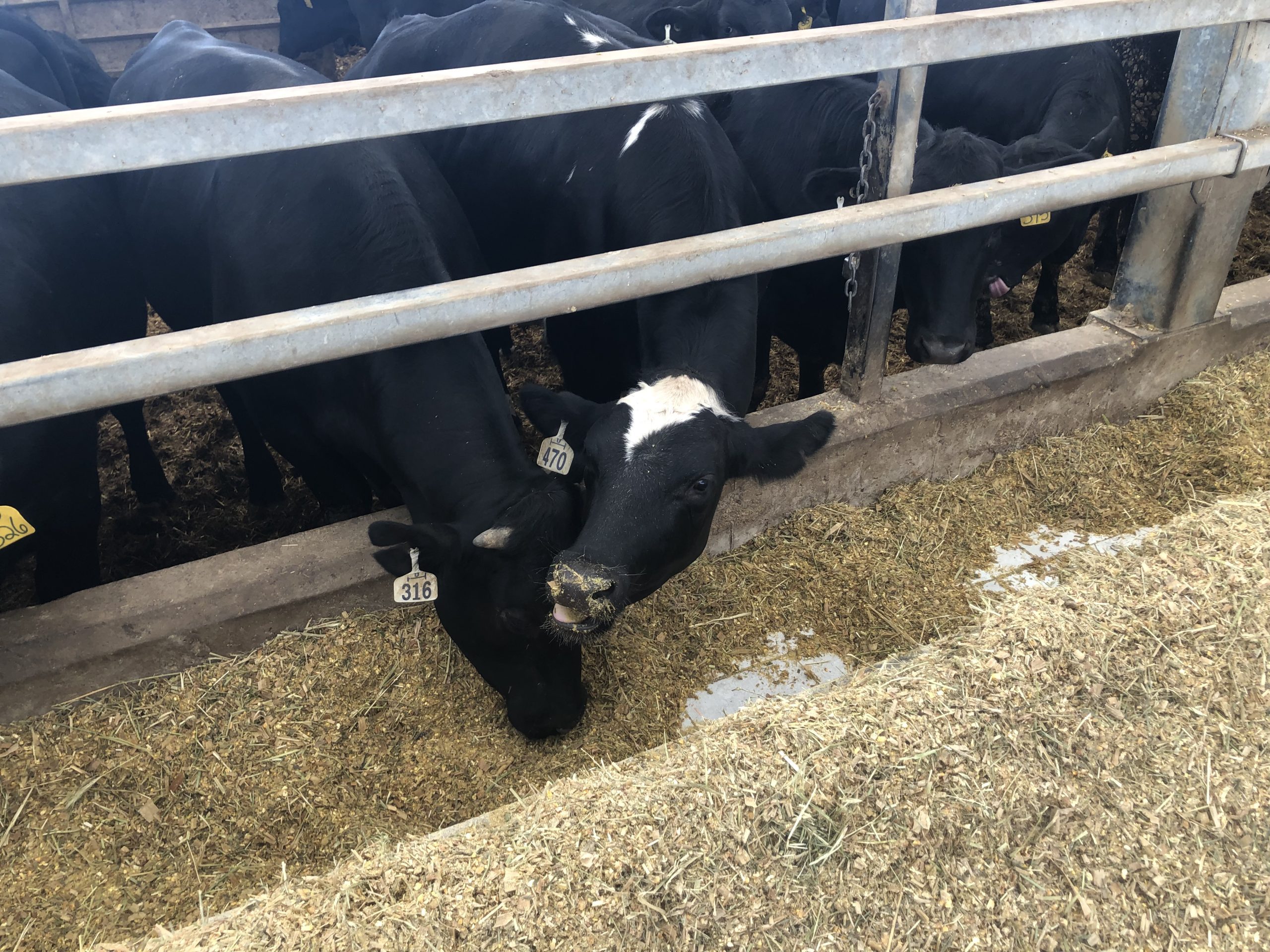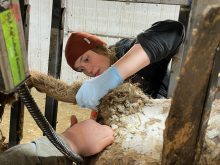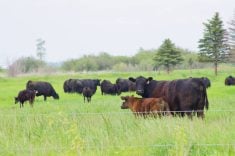Glacier FarmMedia – From biodegradable net wrap to itchy cattle and even pain relief during castration, researchers at Lakeland College have been tackling a wide range of agricultural challenges with support from leading organizations in the industry.
Livestock health research scientist Brenda Ralston and her team at Lakeland College in Vermilion, Alta., are investigating a variety of solutions to some of the industry’s livestock issues.
Driven by a need to reduce single-use plastics in agriculture, Ralston, along with research assistant Andrea Hanson and a number of students, has been working with a new biodegradable net wrap developed by Larry and Austin Ruud of Nature’s Net Wrap.
Read Also

Volatile temperatures expected for this winter
DTN is forecasting a lot of temperature variability in the Canadian Prairies this winter. Precipitation should be close to average.
“Just like the rest of the world is coming up against single use plastics, we in agriculture have a lot of single use plastics that we use — silage bags, grain bags, net wrap and twine. It’s important that we come up with a strategy or solution on how to deal with some of those products,” Ralston said.
With funding from Results Driven Agriculture Research (RDAR), Ralston and her team have been able to learn more about this new product and how it can help prevent software disease in cattle. The condition occurs when livestock eat soft material such as plastic and twine, which cause blockages in the digestive system. It can lead to diarrhea, loss of productivity and even death.
Lakeland College worked with the University of Saskatchewan on the project, which has focused on the degradation time of the biodegradable wrap in an artificial rumen. The next step will be using cannulated animals to investigate how quickly it breaks down in a live rumen.
The third step will be done at Lakeland College, where an evacuation of the rumen will allow researchers to look at the contents to understand what is happening inside and then take that information back to producers.
“We’re not recommending that they feed biodegradable net wrap,” Ralston said.
“But of course, we all know that happens.”
In a similar project, Lakeland College is teaming up with the Saskatchewan Cattlemen’s Association to learn how biodegradable net wrap breaks down in composting situations, both in manure and in soil.
“Right before Christmas, we retrieved bundles of net wrap that we had buried in a manure pile back in May, and we were quite pleased at the extent of breakdown of that material,” she said.
The researchers have buried more packages of net wrap that they will pull out and look at in the future.
“We’re very excited about net wrap,” she said.
Ralston’s team also collaborated with Alberta Beef Producers and the Beef Cattle Research Council to look into itchy cattle and found that lice may not be the only culprits when it comes to spring itching.
“Oftentimes in the spring, we’ll have producers having issues with cattle scratching all their hair off. Lots of producers thought this was an issue with lice, but they would treat the lice and the itching wouldn’t subside,” Ralston said.
“We did a study looking at a number of different parameters that could be involved in causing itching cows,” she said.
However, the researchers found very few of the cattle actually had lice.
“None of them had what we consider intense infestations of lice that would cause itching that we saw, and there was no significant difference between itching and non-itching cattle in terms of their lice infestations,” she said.
The research team tried several things, including a vitamin and mineral panel.
“We all know that serum samples aren’t the gold standard for looking at that, so we did some liver biopsies,” said Ralston.
It looks like copper may be playing a role in hair loss in the animals, she said.
“And so, we’d like to be able to suss that out in a future trial.”
Another project that could improve the health of prenatal and nursing cows looked at supplementing grazing with neonatal vitamins and minerals.
“We get into extensive grazing systems in the wintertime, whether it is bale grazing or swath grazing or those types of things, and with that type of management, we rely on free choice supplements,” Ralston said.
Animals often consume their minerals and vitamins sporadically, which can mean they aren’t always getting what they need, she said.
The research team did a study looking at a product used to supplement calves and neonates, she added. This project was carried out at Lakeland College with local producers’ herds.
“It’s important that neonates get all their nutrition from the cow. If the cow is not getting what she needs, the calf is not getting it either. We know that having sufficient minerals and vitamins helps that calf to develop a robust immune system from the colostrum and antibodies, as well as any vaccinations we give subsequently,” she said.
“There is some work to be done in terms of doing a better job of supplying those vitals to animals when they’re grazing through the winter period and prior to calving.”
The research team at Lakeland College is also looking into the use of lidocaine bands for castration in cattle and sheep as well as tail docking. The study found using a lidocaine-infused castration band provides pain relief until the end of the tail or testicles drop off.
Ralston said RDAR has had a positive impact on Lakeland College, allowing the college to increase research staff significantly.
“We’ve been able to increase the amount of dollars that each researcher has been able to access through various funding, not just RDAR. We’re able to increase or improve our leveraging. We leverage research dollars,” she said.
Ralston said RDAR plays an important role in applied research and in being able to take that research out to producers’ farms, where experiments can be tested.
“It allows us to know whether or not there’s going to be a return on investment for producers, whether or not it’s going to work under field conditions,” she said.
“It allows us to expose students to research, and I think RDAR fills that very important role between research and the grassroots industry, and it allows us, as Lakeland College, to be able to play in that area as well.”
















